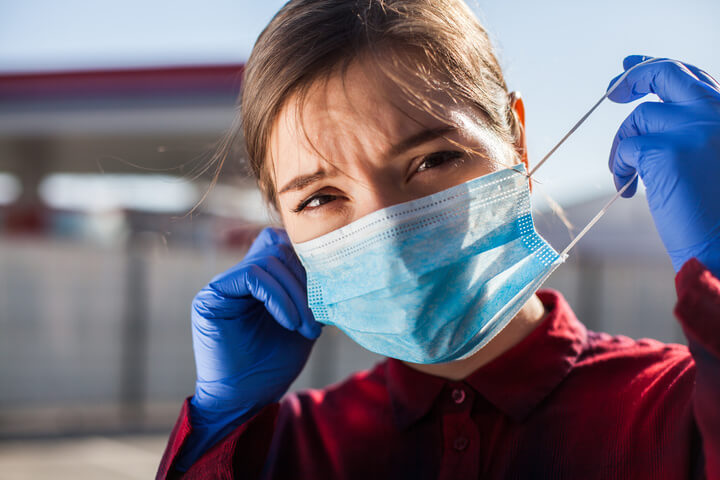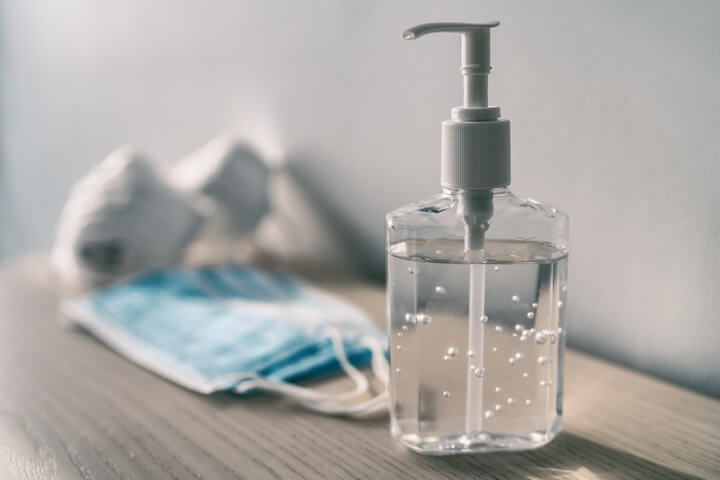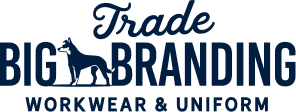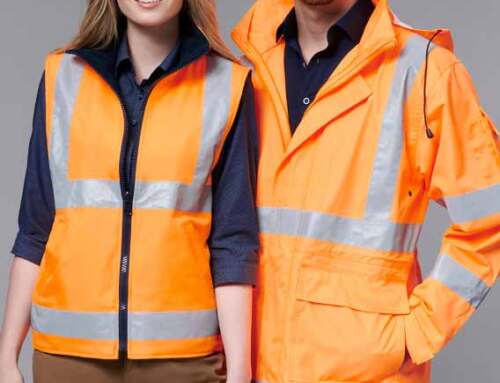The emergence of the coronavirus has highlighted the importance of Personal Protective Equipment (PPE), but even before the pandemic, various high-risk businesses have routinely been using PPE for many, many years.
What Is Personal Protective Equipment?
Personal Protective Equipment (commonly referred to as “PPE”), refers to a range of manufactured items aimed at minimising workplace injuries or illnesses for the wearer. PPE works by reducing physical hazard exposure by creating a barrier between the wearer and the potentially harmful aspect of their work.
5 types of hazards PPE helps prevent exposure to:
- Biological Hazards. Such as bacteria, viruses or fungi.
- Airborne Contaminants. Such as dust and fumes.
- Chemical Hazards. From breathing them in, contact with skin, or consuming them orally.
- Physical Hazards. This includes excessive or prolonged exposure to noise, vibrations, UV radiation, or heat/cold.
- Ergonomic Hazards. Common examples of ergonomic hazards are repetitive strain injury and eye strain.
An excellent example of PPE in the current marketplace is mask-wearing to reduce the spread of airborne viruses such as the coronavirus. Other examples might include gloves, gowns, eye protection and body shields.

Why Is PPE Important?
Personal protective equipment is a vital aspect of managing workplace health and safety. Under Australian Work Health and Safety laws and regulations (sometimes called Occupational Health and Safety or OHS), your business must ensure the health and safety of its workers and other people at risk because of your business operations.
WHS works within the framework of the Work Health and Safety Act 2011, the Work Health and Safety Regulations and the associated Codes of Practice. See here for more information on the legal requirements for Health and Safety in your territory, or see below for some of the standards and regulations relating to PPE in Australia.
Essentially, all of these laws and regulations mean it is the responsibility of employers to minimise the risk of injury for their workers, customers, visitors and the general public on their premises or using their services or products. Although some responsibility lies with employees to keep themselves and others safe – under the Act, the primary duty of care rests with the business they work for – this is where PPE comes in.
The importance of PPE use has surged over the last few years due to the COVID-19 pandemic, however, for some industries, it has always been a part of their risk management strategies. However, it pays to note PPE is just one tool businesses use to meet the requirements of the law; it is by no means the complete answer to workplace health and safety.
7 Types Of PPE
There are several main types of personal protective equipment commonly used in the workplace to aid in the prevention of accidents or injury, these are:
1. Respiratory PPE
Respiratory protective equipment (RPE) is designed to protect people from inhaling chemical or biological substances. This may include germs, viruses and bacteria, harmful vapours, fumes, or dust. The most prominent form of respiratory PPE is the face mask.
2. Eye Protection PPE
Eye protection PPE is designed to lessen the likelihood of eye or facial injuries or degeneration in eyesight. Examples of eye PPE are safety glasses and protective face shields. Understandably protecting the eyes is extremely important for many businesses; this protection may include protecting the eyes and face from harmful radiation, overly harsh lighting, fluid or chemical spray or splashes, flying debris and/or extreme temperatures https://rocket-australia.com/national-casino.

3. Hearing Protection PPE
Hearing protection PPE is directly related to reducing repeated noise exposure which can lead to hearing loss and sometimes ongoing psychological stress. Examples of hearing PPE are earmuffs and earplugs, as well as noise insulating and absorption products.
4. Hand Protection PPE
Hand protection is a general term that covers protecting the hands and arms from potential injury. This could include cuts, splinters, and fractures of the bones or preventing the absorption of harmful substances through the skin. Gloves are the most common form of hand protection, the material the gloves are made from is the key to offering the right kind of protection. For example, thermal protection, extra grip, waterproof etc.
5. Foot Protection PPE
Foot protection generally describes footwear such as; steel toe boots to prevent the foot from being crushed; heat resistant legwear for high temperatures; footwear with additional cushioning to reduce the impact of standing on hard floors all day; or footwear with extra grip on the sole to reduce slippage. Protective footwear also relies heavily on the materials used in the manufacturing process as well as the fundamental design of the shoe/boot.
6. Head Protection PPE
When considering head protection, this usually means a hardhat. The industrial sector, construction industry and manufacturing sector are everyday users of hard hats to protect against the hazard of falling objects and bumping your head on harsh surfaces. Another common form of workplace headwear are hairnets of hats which are designed to protect the wearer from getting their hair caught or entangled in devices or machines.
7. Skin Protection PPE
Skin protection on the job will depend significantly on whether or not your work requires you to be indoors or outdoors for the majority of the day. However, in some instances, the indoor environment is just as tricky. Skin protection PPE ranges from protection from extreme hot or cold temperatures (e.g. insulated or heat resistant clothing), high visibility clothing to increase visibility (commonly seen in construction, the railways, road and traffic workers), or skin coverage to protect from the unintentional absorption of chemicals as often worn in laboratories, or hospitals etc.
Ensuring Proper Use Of PPE In The Workplace
All personal protective equipment needs to be fit for purpose. It should be designed and constructed from appropriate materials and, most importantly; fit comfortably. If PPE is uncomfortable or does not fit right, it can create further hazards on the job or discourage people from wanting to wear it. PPE needs to be readily available to all those who need it, and training should be given on its proper use. The use of PPE in your workplace should be addressed in your health and safety policy which should outline:
- When to wear PPE
- What kind of PPE is necessary
- How to properly fit, adjust, and wear the PPE properly
- How to remove, care for, and dispose of the PPE
- Understand the limitations of the PPE
- The useful life of the PPE
When Is It Necessary To Wear PPE?
Conducting a hazard risk assessment is usually the first step to identifying the need for PPE. After assessing the hazards and determining whether or not they can be removed or minimised, defining the need for the proper protective equipment will be the next step. Identifying the right PPE products, sourcing them and providing them to employees is an important part of any business health and safety policy. However, there are some PPE requirements as guided by Health and Safety laws, regulations and guidelines.
PPE compliance Rules and Regulations in Australia:
Face Masks
- ISO 22609:2004 – an international standard for medical face masks.
- AS/NZS 4381:2015 – relating to disposable face masks use in healthcare.
- AS ISO 16900.3:2015 – relating to respiratory PPE using particle filter penetration tests.
- AS NZS 1716:2012 – guidelines for respiratory protective devices and filtration standards.
- AS NZS 1715:2009 – choosing, using, and maintaining respiratory protective equipment.
Protective Clothing
- ANSI/AAMI PB70:2003 – provides guidelines in choosing apparel and drapes for liquid contaminants.
- ASTM 1671 – relating to the blood-born resistance of materials used in protective clothing.
- ISO 22610 – provides information for medical and surgical drapes and gowns for staff and patients.
- ISO 22612 – describes clothing for protection against infectious agents.
- AS NZS 4011 – related to single-use medical examination gloves.
- AS/NZS 1337.1:2010 – guidelines for eye and face protective equipment.
- AS/NZS 4501.1:2008 – guidelines on the selection, use, care and maintenance of occupational PPE.
- AS/NZS 4501.2:2006 – general requirements for protective clothing for specific occupations.
- AS/NZS ISO 2801:2008 – general recommendations for clothing for protection against heat/flames.
- AS/NZS ISO 13994:2006 – clothing for protection against chemicals.
- AS/NZS ISO 22608:2007 – relating to fabric protection against liquid chemicals.
- AS/NZS 4399:1996 – relating to the evaluation and classification of sun-protective clothing.
- AS/NZS 4543.3:2000 – protective standard relating to x-rays.
Hand Sanitiser
- EN13727 is the standard followed for adequate hand sanitiser rules. Products with this labelling have passed appropriate testing by the Australian Government.

Hi Vis Workwear
- AS/NZS 1906.4.2010 – colours used for hi-visibility clothing.
- AS/NZS 4602.1.2011 – hi-vis garment design requirements.
- AS 4399:2020 – the ability of the garment to provide protection from UV radiation.
- AS/NZS 4602.2:2013 – relating to high visibility safety garments for fire service personnel.
Please note this is by no means an exhaustive list there are more standards, regulations and guidelines relating to PPE and protective workwear and other industry-specific requirements.
How To Select The Right PPE
Once the need for PPE has been established, the next important task is to select the right PPE for the job. Take a look at our guidelines below to help ensure you source the best PPE for the job.
- Comfort Is King. The physical comfort of PPE items is a top priority – if PPE is unnecessarily uncomfortable or poorly fitted, it is unlikely that it will be worn in the correct manner.
- Focus On The Hazards. Always choose the right PPE to match the hazards. Don’t try to select a general item that may cover two or three purposes, stick with well-defined items specific to each identified hazard.
- Get Expert Advice. If unsure, discuss your needs with an occupational health and safety expert. Always ensure any potential PPE is approved under the Australian standards for protective wear.
- Shop Around. Get in contact with trusted local workwear suppliers who have trained sales representatives that can point you in the right direction.
- Compare Quality Not Price. Consider a number of alternatives check product claims, reviews and test data. Better quality products will last longer and likely provide a better fit. Disposable products are not always cheaper in the long run.
- Involve The Wearers. Ask the workers who are going to be wearing the PPE what types/brands they prefer.
- Be Flexible. Attempt to incorporate flexibility into your PPE choices if necessary to accommodate all genders, sizes and ages (as long as it meets required legislation and standards).
Keeping everyone safe in the workplace is always one of the main goals of any business, and while PPE is not considered the ultimate safety solution, it is part of the journey to a complete health and safety strategy for all workplaces.





